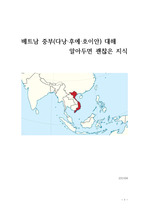일본의 자녀양육 지원 정책 추진과 현황
(주)학지사
- 최초 등록일
- 2015.03.24
- 최종 저작일
- 2004.01
- 22페이지/
 어도비 PDF
어도비 PDF
- 가격 5,100원

* 본 문서는 배포용으로 복사 및 편집이 불가합니다.
서지정보
ㆍ발행기관 : 한국아동권리학회
ㆍ수록지정보 : 아동과권리 / 8권 / 1호
ㆍ저자명 : 정미라, 오미희
목차
Ⅰ. 서론
Ⅱ. 자녀양육지원정책의 등장배경
Ⅲ. 자녀양육지원 정책의 종류 및 특성
Ⅳ. 자녀양육지원정책의 평가
Ⅴ. 결론 및 논의
참 고 문 헌
한국어 초록
본 연구의 목적은 일본의 자녀양육지원정책의 수립 배경과 그 과정 및 평가를 살펴보는 것이다. 일본은 1989년 출산율 1.57쇼크로 인해 소자녀화 문제를 해결하고 여성의 취업을 지원할 수 있는 방안을 찾기 위해 지속적인 노력을 기울이고 있다. 이러한 자녀양육 지원정책은 후생성뿐만 아니라 대장성, 자치성, 문부성, 건설성, 노동성 6개 정부 부처의 협력아래 범국가적으로 추진되고 있다. 이러한 점은 현재 여성 노동자의 자녀 양육에 대한 요구는 물론 출산율이 1.17로 감소되어 국가적 수준에서 심각한 문제로 부각되고 있는 우리나라 자녀 양육 지원 정책 수립이나 그 시행에 많은 시사점을 줄 수 있을 것이다.
영어 초록
The purpose of this study was to analyze the process of formulating Japanese child care support system, such as the 'Angel Plan', the 'New Angel Plan', and 'the New Angel Plan-Plus One and to evaluate the effects of these policies.
Shocked by the child birth-rate 1.57 in the year of 1989, japanese government has tried to solve the problem of decrease in child birth, and to procure the devices of supporting women's employment. In attaining that goal, not only Ministry of Health, but also Ministry of Finance, Ministry of Home Affairs, Ministry of Education, Ministry of Land and Infrastructure, Ministry of Labor cooperated.
Through the analysis of Japanese governmental policies and services concerning child care support system, we could find many ideas to formulate policies and goals, focusing primarily on meeting the demand of child care of working women and solving the problem of decrease in child birth in Korea.
참고 자료
없음




